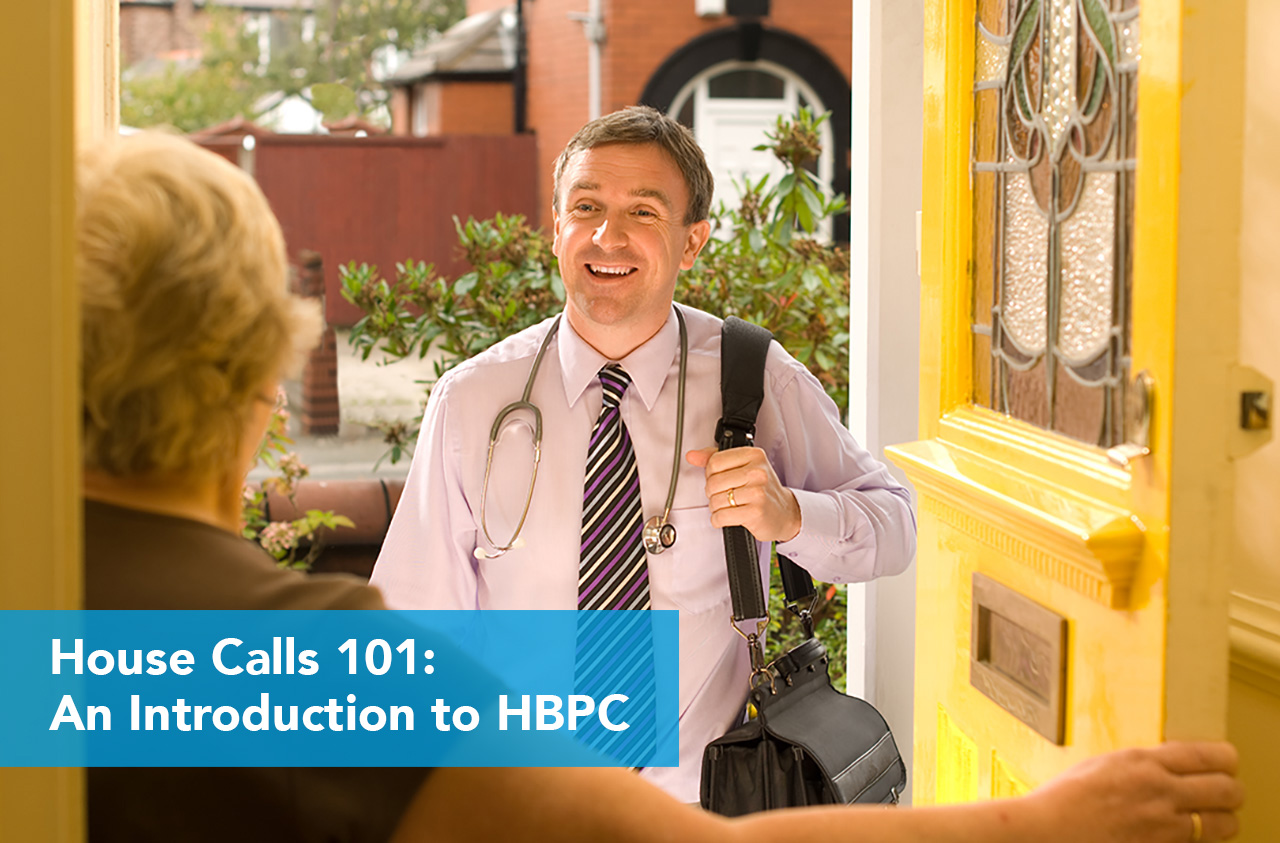
About the Article:
Have you ever wondered what a career in home-based primary care would be like? According to Heather Hodge, Director of Education for the Home Centered Care Institute (HCCI), the organization’s new online course, House Calls 101: An Introduction to HBPC, is a great way to find out.
Article:
While home-based primary care (HBPC) is a growing field, many providers may not fully appreciate the numerous benefits of seeing patients in a home-based setting, nor understand how practicing within an in-home environment may differ from an office-based setting. In addition, many HBPC practice managers and operations staff are seeking a better understanding of house call components.
The Home Centered Care Institute’s (HCCI) new online course, House Calls 101, was developed to offer providers, practice managers and operations staff the unique opportunity to virtually shadow an HBPC physician and her medical assistant on a simulated house call. The course also provides a detailed breakdown of the steps to be taken before, during, and after a home visit, and offers insight into the characteristics and personal qualities of successful HBPC providers.
House Calls 101 is HCCI’s newest online course. According to Heather Hodge, HCCI Director of Education, the course was developed as a tool to expand the HBPC provider talent pool and give practice managers and operations staff a closer look at what goes into a house call. “Only about 15% of the patients who truly need HBPC services receive them,” Hodge said, “which correlates directly to the need to expand the HBPC provider network and provide a strong practice management foundation.”
Hodge’s background in the design and development of continuing medical education programs played a key role in creating the 30-minute course. She sat down with HCCInsights to discuss her perspective on the course and its ability to realistically demonstrate what it’s like to be an HBPC provider.
HCCInsights: What was the main objective behind the development of the course?
Hodge: The course is part of HCCI’s overall commitment to developing the HBPC workforce. The demand for HBPC providers currently exceeds the supply, but not every provider is suited for a career in HBPC. We created this course to give prospective HBPC providers, practice managers and operations staff a realistic and impartial look at what HBPC is like in the real world.
HCCInsights: What are some of the unique features of the course?
Hodge: It’s more of a primer or introduction to HBPC in general versus some of our other online course offerings that focus on one specific topic, such as Telehealth or Coding. It also introduces video as part of our instruction material for the first time — and is highly engaging with interactive elements.
HCCInsights: What do you think course participants will find most valuable?
Hodge: House Calls 101 de-mystifies the house call process. It walks through each of the main components of a house call ─ from preparing for the day all the way through to completing post-visit activities. In addition, the course covers what it’s like to travel with a Medical Assistant (MA) and takes a deep dive into the Social Determinants of Health (SDOH) that can significantly impact a patient’s health and well-being, and health care utilization. Finally, the course profiles the characteristics and personal qualities required to be successful as an HBPC practitioner.
HCCInsights: Why is it important for HBPC providers, practice managers and operations staff to understand the “Geriatric 5Ms” covered in the course?
Hodge: The “Geriatric 5Ms” is a framework for caring for complex patients. It aligns perfectly with the home-based primary care model; this is what the providers do every day. It focuses on key areas: Mind, Mobility, Medications, Multi-complexity and Matters Most. These areas are critical to understand because most HBPC patients are older adults with multiple chronic conditions and functional impairments.
HCCInsights: Can course participants earn CME by taking House Calls 101?
Hodge: Yes. House Calls 101 was planned and implemented in accordance with the accreditation requirements and policies of the Accreditation Council for Continuing Medical Education (ACCME) through the joint providership of PeerPoint Medical Education Institute, LLC and HCCI.
To learn more about House Calls 101: An Introduction to HBPC and to register, click here.






